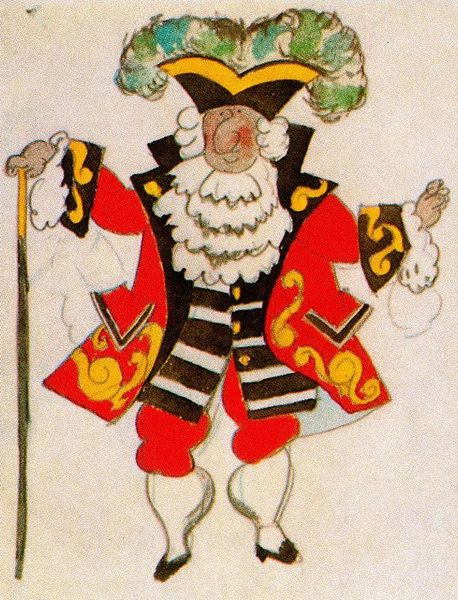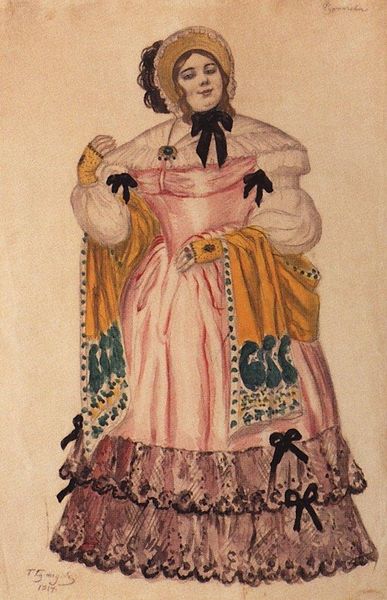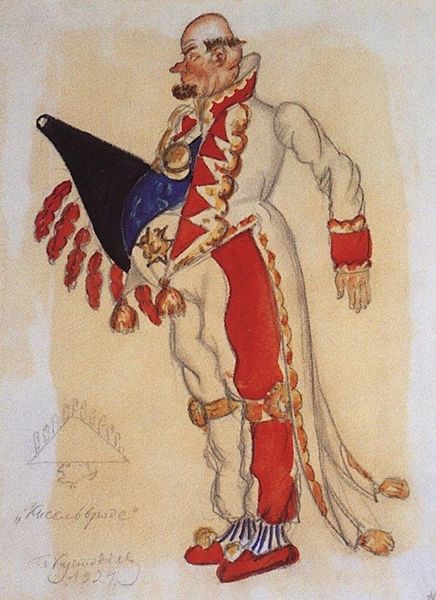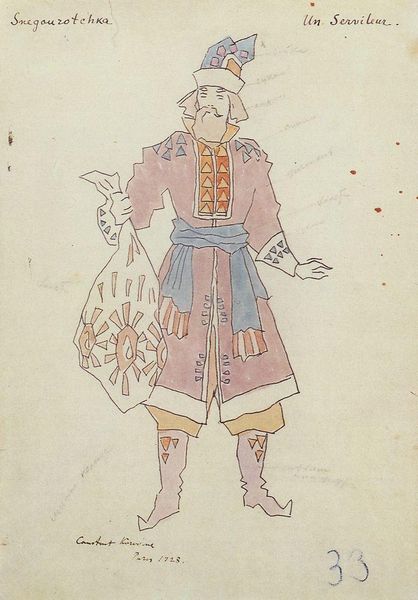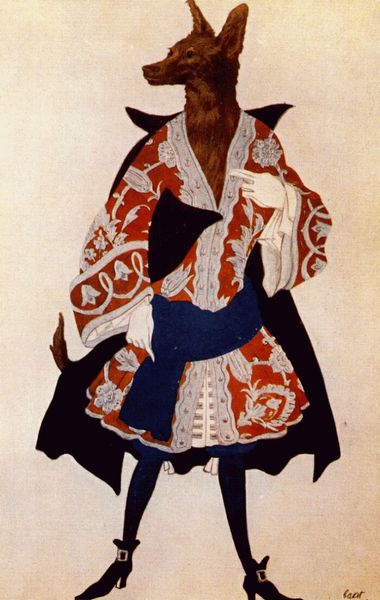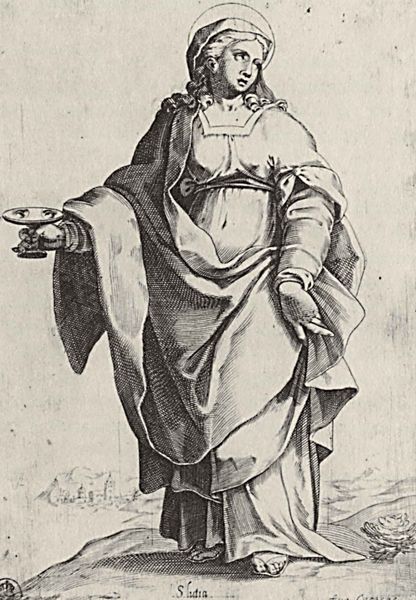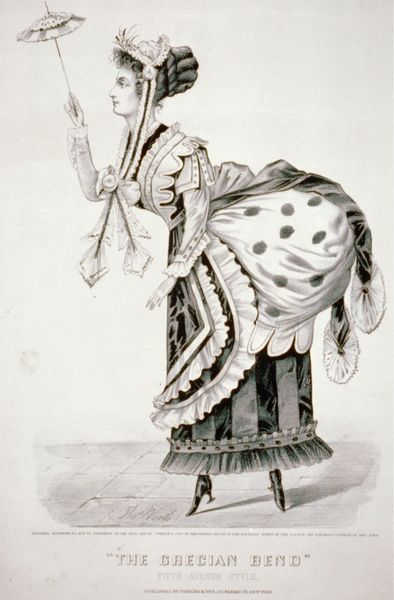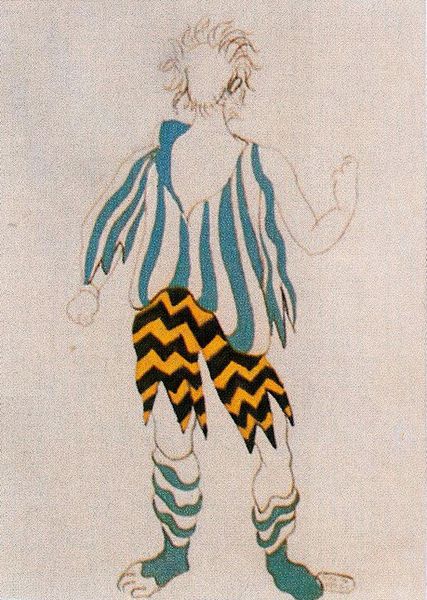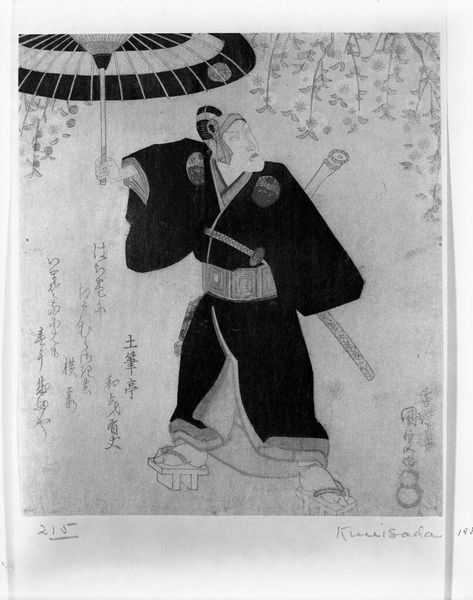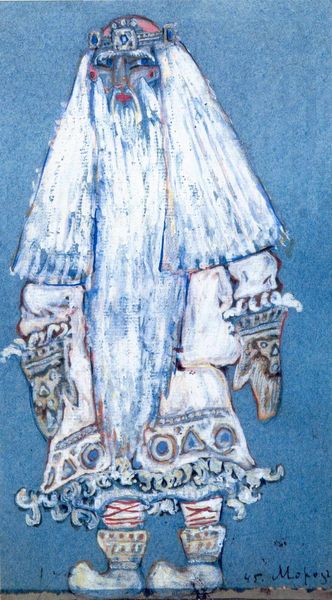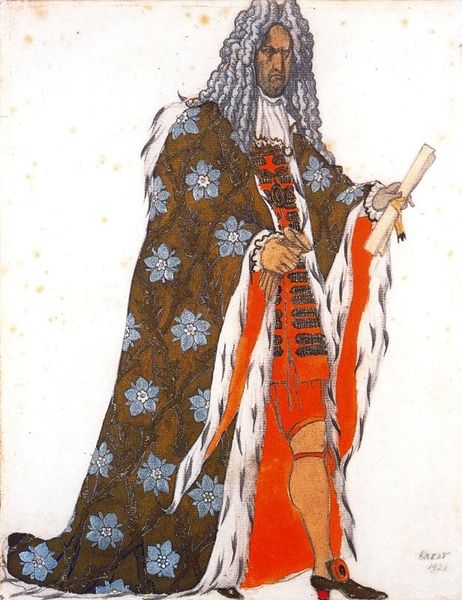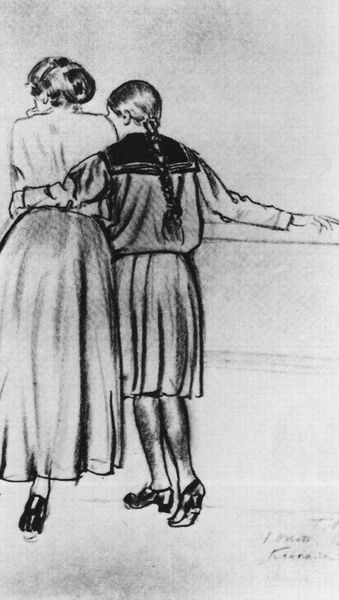
Copyright: Public domain US
Editor: This is "Costume design for ballet 'Tricorne'," a 1917 pen and ink drawing by Pablo Picasso. It's quite striking, isn't it? The black and white stripes are really bold and create a dramatic, almost theatrical feel. What’s your take on this work? Curator: It's important to remember when and where this piece was made. 1917; Europe was embroiled in WWI. Picasso, though Spanish, was living in Paris, a hub for artistic innovation and also a place profoundly affected by the war. Consider the ballet itself. "Le Tricorne" was a commission from Sergei Diaghilev, who brought Russian ballet to the West. Diaghilev sought to synthesize avant-garde art with traditional dance, attempting to revitalize a classic art form and also assert art's role within culture and wartime anxieties. What do you notice about Picasso's approach to costume design? Editor: The cubist influence is pretty clear in the fragmented and slightly distorted forms. But it's still recognizably a costume, evoking 18th-century attire, but with this really modern edge. Curator: Exactly. And this tension—between tradition and modernity, between representation and abstraction—is key. The striking visual contrasts speak to Picasso's broader engagement with the socio-political landscape, disrupting conventional expectations of form and identity, which mirrored the broader disruption occurring in the world during WWI. How do you see the impact of theatre design in general, which involves art institutions as much as the artists? Editor: The work reminds me how even seemingly decorative arts, like costume design, were really important places for artists to experiment with new ideas about how to represent the world, or perhaps comment on the world at large. Curator: Precisely. It demonstrates the intersection of art, entertainment, and political commentary. The Ballet Russes' impact cannot be overstated, it involved all of the creative circles. Considering pieces like this opens doors to exploring more about what was actually important in shaping taste and opinions at that time. Editor: I now see the work not only as an artwork but as a vital piece of cultural artifact.
Comments
No comments
Be the first to comment and join the conversation on the ultimate creative platform.
